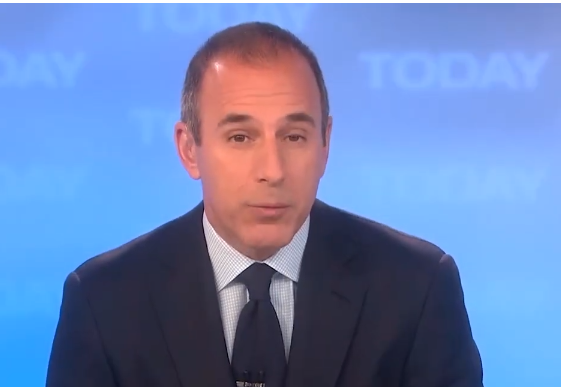With a projected net worth of $80 million in 2025, Matt Lauer’s life is one of extraordinary career achievement entwined with public scandal. During his time as co-anchor of NBC’s Today from 1997 to 2017, Lauer gained widespread recognition for his professionalism, adaptability, and ability to handle both serious political interviews and more lighthearted, human-interest pieces with remarkable ease.

His pay history demonstrated how highly his presence was valued. He became one of the highest paid celebrities on television when his contract was renewed in April 2012, increasing his income from $17 million to $25 million a year. According to reports, he was earning between $25 and $28 million annually by 2017, which put him in second place to Judge Judy and Ellen DeGeneres in terms of television compensation. The industry’s reliance on tested, compelling talent to draw audiences and generate advertising income was demonstrated by Lauer’s contracts.
| Category | Details |
|---|---|
| Full Name | Matthew Todd Lauer |
| Date of Birth | December 30, 1957 |
| Age | 65 |
| Place of Birth | New York City, USA |
| Occupation | Former TV Host, News Anchor |
| Career Highlights | NBC Today Show (1997–2017), Olympic Coverage, High-Profile Interviews |
| Notable Events | Fired from NBC in 2017 amid sexual misconduct allegations |
| Salary | $25–28 million/year at peak |
| Net Worth | $80 million (2025) |
| Spouse | Annette Roque (m. 1998; divorced 2019) |
| Children | Three |
Lauer’s career development started in local news, where he developed the reporting abilities that would later come to define his work. He rapidly rose to fame after joining NBC in 1992 by covering significant national events such as the September 11 attacks, several Olympic Games, and presidential elections. Both the Today show and his personal image benefited from the credibility that his interviews with political and cultural figures created.
A major change occurred when his career was abruptly ended in November 2017. Following claims of sexual misbehavior at work, Lauer was fired by NBC, which cited several complaints and declared the dismissal to be “for cause,” nullifying any severance or extended benefits. Lauer suffered financial losses as a result of this decision, but it also demonstrated the network’s dedication to dealing with workplace misconduct and the increasing social and professional repercussions of individual behavior. The dismissal caused a stir in the media sector and served as a warning about responsibility in high-profile roles.
Diverse sources of revenue have already contributed to Lauer’s net worth before the crisis. In addition to his NBC salary, he profited from investments, media appearances, and sponsorships; but, the loss of prospective profits following the unexpected termination of his career eclipsed these extra sources of income. His wealth was originally estimated by reports to be between $120 and $150 million before to the scandal and divorce, demonstrating the extent of his financial accumulation and professional prominence.
Lauer’s dismissal had an effect that went beyond his own finances. It turned into a turning point in the larger #MeToo movement, highlighting structural issues with power disparities, workplace morality, and the fallout from wrongdoing in media companies. Lauer’s well-publicized termination brought to light the interdependence of public trust, career length, and financial stability, especially for individuals who work at the nexus of journalism and fame.
The structure of television economics, where celebrity power drives advertising and syndication revenue, was reflected in Lauer’s profits at NBC in addition to his own talent. His work on the Today show strengthened the connection between prominence, influence, and financial gain by generating daily audience engagement that resulted in multi-million dollar contracts. His financial story reveals the weaknesses that come with prominent roles while also highlighting the potential accessible to elite ability.
The fact that these crises are industry-wide is highlighted by comparisons to peers like Billy Bush and Bill O’Reilly, who were both accused of sexual misconduct. Together, these cases shed light on how networks handle accusations, end contracts, and protect their brand while teaching us about the financial and legal repercussions of unethical behavior in the workplace.
Lauer’s career serves as more evidence of how important public opinion is to maintaining financial success. His polished, professional, and friendly demeanor enhanced his appeal and helped him earn a high salary and have his contract renewed. But when the accusations surfaced, the same exposure increased scrutiny, causing reputational harm that had an immediate impact on his income and long-term professional opportunities.
The financial ramifications in the aftermath were shaped by legal complications. Notwithstanding rumors of possible settlements based on the remaining terms of the contract, NBC insisted that no severance was due because of the “for cause” classification. This legal nuance highlights how, in situations of suspected misconduct, individual net worth is directly impacted by contractual provisions and corporate policy.
Even though it has decreased since its peak, Matt Lauer’s net worth is still a reflection of his decades of lucrative contracts and media clout. The $80 million estimate is based on real estate holdings, past investments, and cumulative earnings, illustrating the ability of accumulated wealth to withstand setbacks in one’s career. However, the financial story is inextricably linked to the ethical and reputational aspects of his profession, acting as a sobering reminder of the risks faced by public personalities in the media.
From a wider angle, Lauer’s career highlights the interaction of financial gain, professional success, and personal behavior. In addition to talent and marketability, his high income was also dependent on audience trust, which may quickly be damaged by accusations of wrongdoing. His dismissal’s financial and cultural fallout shows how moral lapses may affect one’s riches, organization’s reputation, and industry norms.
